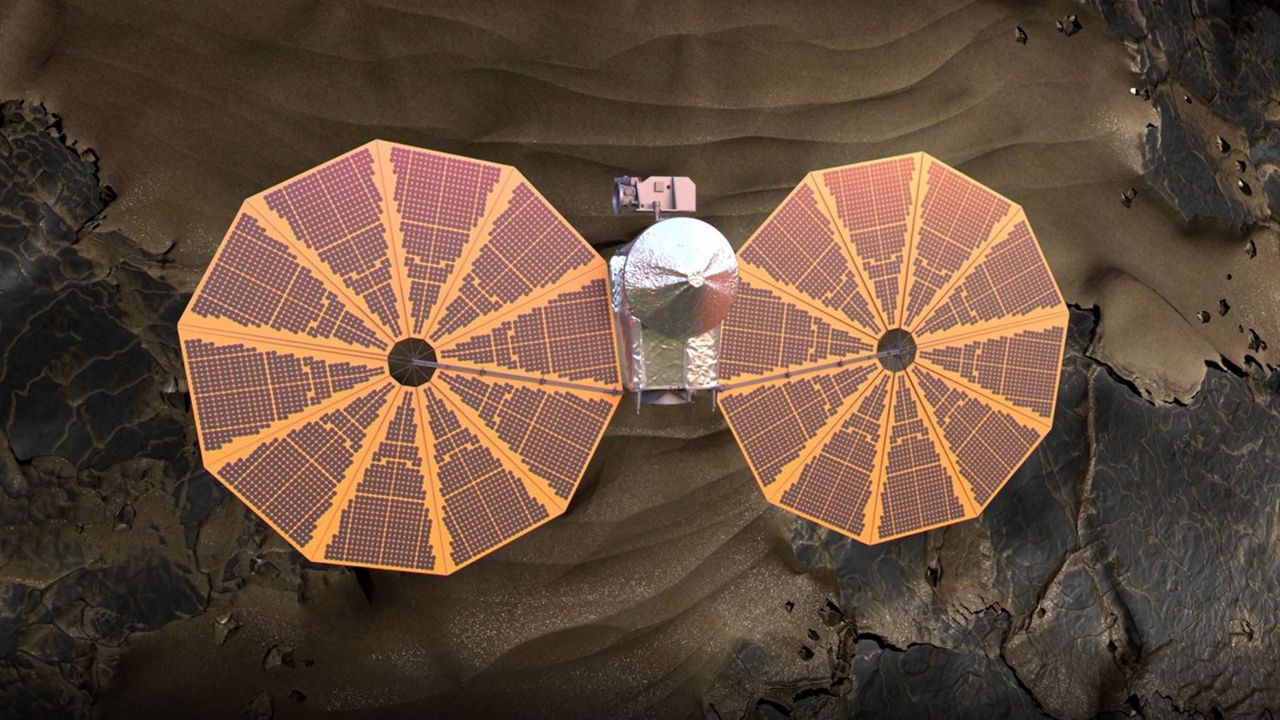CAPE CANAVERAL, Fla. — The newly launched Lucy spacecraft, designed to explore Jupiter’s Trojan asteroids, has a jammed solar panel.
What You Need To Know
- NASA's Lucy spacecraft has a jammed solar panel that is mostly, but not completely, deployed
- The spacecraft was launched on Oct. 16 for a 12-year mission to explore Jupiter's Trojan asteroids
- Lucy remains in stable condition, NASA officials say
- Previous Coverage: NASA, ULA successfully launch Lucy to study Jupiter’s asteroids
On Saturday, Oct. 16, United Launch Alliance’s Atlas V rocket sent NASA’s Lucy spacecraft on a 12-year mission to explore Jupiter’s Trojan asteroids.
However, NASA discovered while attempting to unfurl Lucy’s two massive solar arrays, one of them had became stuck.
Each solar array, or panel, is 24 feet in diameter, and they are designed to power the spacecraft’s systems and batteries.
According to NASA, the jammed array is between 75% to 95% deployed with a lanyard holding it in place.
Currently, an anomaly response team is working to figure out what caused the jam, and NASA is trying to determine what options it has, including potentially just leaving the solar panel as is, the agency said in a press release.
“Any attempt to safely redeploy the array would occur no earlier than Nov. 16,” the release said.
However, the space agency said that aside from the jammed solar panel, Lucy is in stable condition and all the spacecraft's other systems are working.
NASA has not yet replied to a request for comment from Spectrum News 13.
The purpose of the mission is to study Jupiter's Trojan asteroids, two large swarms of numerous asteroids within Jupiter’s vast orbit.
Lucy’s mission will study only six: Patroclus, Menoetius, Eurybates (and that Trojan asteroid's moonlet Queta), Orus, Leucus, and Polymele. But Lucy will also visit a main-belt asteroid (a non-Trojan) named DonaldJohanson.




